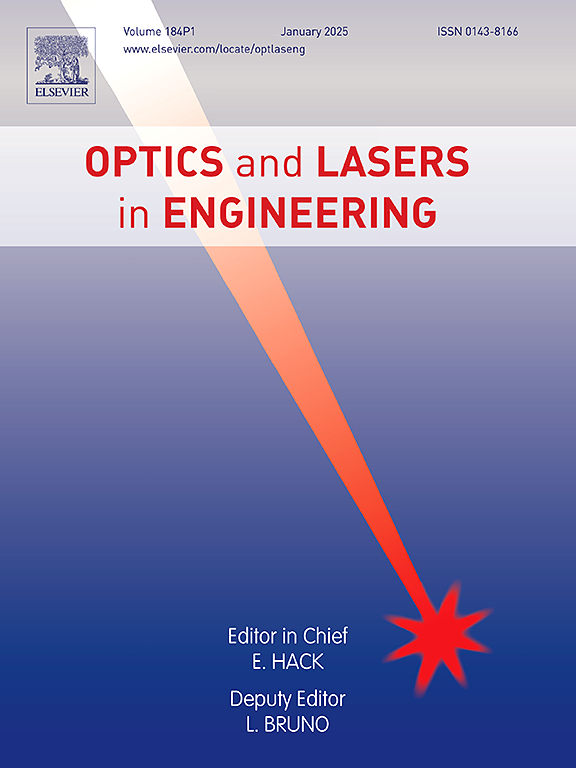Super-resolution of photoelastic polarization images using a neural network and a divide-and-conquer strategy
IF 3.5
2区 工程技术
Q2 OPTICS
引用次数: 0
Abstract
The use of polarization cameras in digital photoelasticity has become increasingly prevalent, significantly contributing to the advancement of digital photoelasticity. However, polarization images captured by polarization cameras suffer from resolution loss, which severely affects the accuracy of the isochromatics and isoclinics. Therefore, it is essential to enhance the resolution of these polarization images. In this study, a super-resolution reconstruction network specifically designed for photoelastic polarization images is proposed for the first time. A large dataset was generated and collected to support the development of this network. Additionally, a divide-and-conquer strategy is introduced to avoid interference between the different degradation models. This strategy also enables the efficient acquisition of tens of thousands of real-world datasets. Comparative experiments demonstrate that the proposed divide-and-conquer strategy significantly enhances the network's accuracy. In comparison with interpolation methods and existing networks, the proposed network consistently outperforms them, showing superior performance. This network effectively increases the resolution of photoelastic polarization images, leading to more accurate isochromatics and isoclinics.
求助全文
约1分钟内获得全文
求助全文
来源期刊

Optics and Lasers in Engineering
工程技术-光学
CiteScore
8.90
自引率
8.70%
发文量
384
审稿时长
42 days
期刊介绍:
Optics and Lasers in Engineering aims at providing an international forum for the interchange of information on the development of optical techniques and laser technology in engineering. Emphasis is placed on contributions targeted at the practical use of methods and devices, the development and enhancement of solutions and new theoretical concepts for experimental methods.
Optics and Lasers in Engineering reflects the main areas in which optical methods are being used and developed for an engineering environment. Manuscripts should offer clear evidence of novelty and significance. Papers focusing on parameter optimization or computational issues are not suitable. Similarly, papers focussed on an application rather than the optical method fall outside the journal''s scope. The scope of the journal is defined to include the following:
-Optical Metrology-
Optical Methods for 3D visualization and virtual engineering-
Optical Techniques for Microsystems-
Imaging, Microscopy and Adaptive Optics-
Computational Imaging-
Laser methods in manufacturing-
Integrated optical and photonic sensors-
Optics and Photonics in Life Science-
Hyperspectral and spectroscopic methods-
Infrared and Terahertz techniques
 求助内容:
求助内容: 应助结果提醒方式:
应助结果提醒方式:


